Your family closet often feels like a battlefield, not a sanctuary. Between mismatched socks, outgrown clothes, and forgotten seasonal items, achieving true organization can seem impossible. Many families struggle with finding systems that actually stick, systems that adapt to changing needs, growth spurts, and busy schedules. You need practical, real-life solutions for your unique family challenges, not aspirational Pinterest boards that gather dust. This guide delivers actionable steps and smart product insights to transform your family’s closet from chaotic to calm, keeping your budget and sanity intact.

Understanding Your Family’s Closet Challenges
Before you dive into a massive overhaul, you must acknowledge the specific hurdles your family faces. Closet organization for families differs significantly from organizing a single person’s wardrobe. You juggle multiple users, varying sizes, diverse activities, and the constant influx of new items. Understanding these common pain points helps you choose solutions that truly work for your household.
Consider the realities:
- Time Constraints: You have limited hours for organization. Solutions must be quick to implement and easy to maintain.
- Varying Needs: One family member needs business attire, another athletic wear, and a third school uniforms. Your closet must accommodate all these categories without becoming a jumbled mess.
- Growth Spurts: Children outgrow clothes rapidly. Your system needs built-in flexibility to handle frequent swaps and donations.
- Small Spaces: Many homes, especially apartments or older houses, feature compact closets. You must maximize every inch effectively.
- Multiple Users, One Space: A shared family closet or a single closet serving multiple children requires careful zoning and clear boundaries to prevent chaos.
You are not alone in these struggles. Your goal is not perfection, but rather a functional, stress-free space that supports your family’s daily routines. Focus on systems that simplify selection, streamline laundry, and encourage independence, especially for your children.

The Foundational Five: Your Closet Decluttering Blueprint
Every successful closet organization project begins with a thorough declutter. This process might seem daunting, but breaking it down into manageable steps makes it achievable. Dedicate a specific block of time for each stage, and involve your family members where appropriate.

Step 1: Empty Everything Out
Pull every single item out of the closet. Yes, every last hanger, shoe, and bin. Place everything on a bed, floor, or another clear surface. This visual impact helps you understand the sheer volume of items you own. It also allows you to see the empty space you have to work with, giving you a fresh perspective for reorganizing.
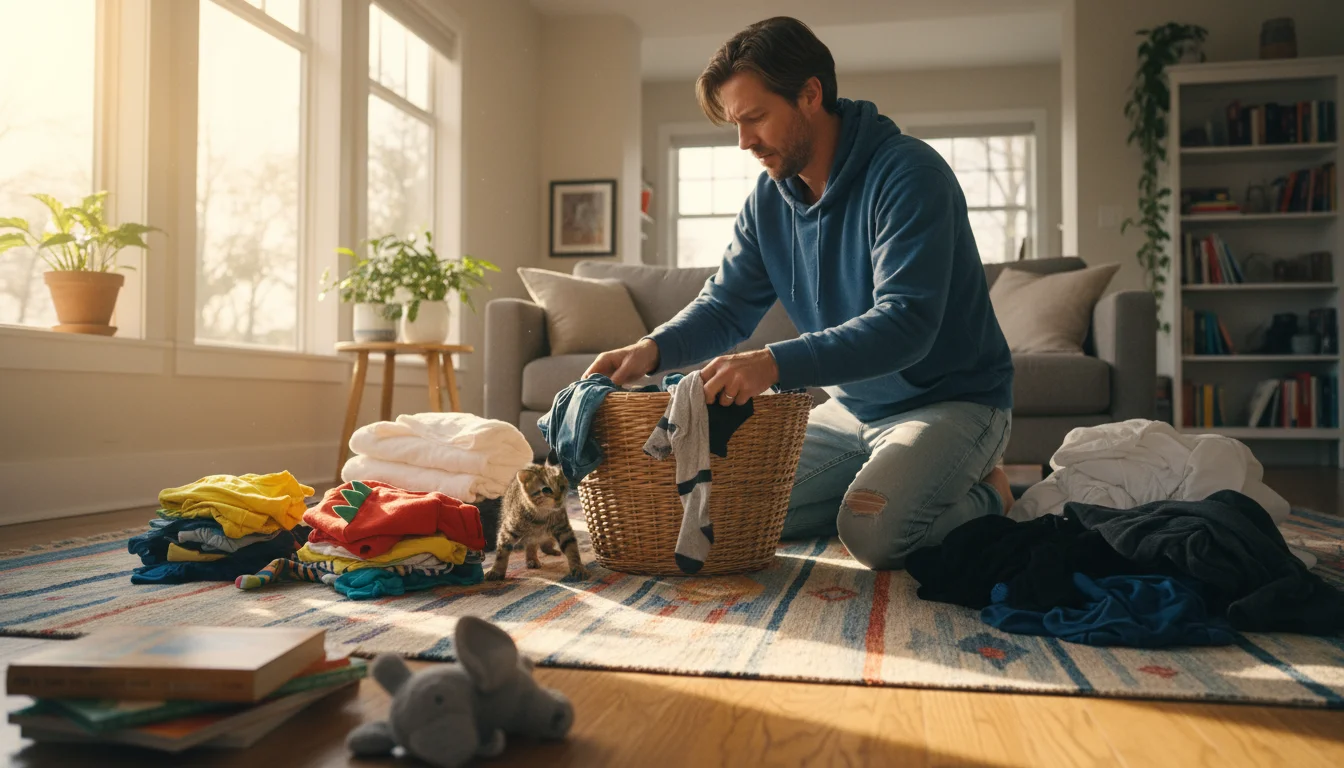
Step 2: Sort into Categories
Group similar items together. Create piles for:
- Adults: Tops, bottoms, dresses, outerwear, accessories, shoes, activewear, intimates.
- Children: Onesies, tops, bottoms, dresses, pajamas, outerwear, socks, shoes, school uniforms.
- Linens/Miscellaneous: Towels, spare bedding, storage bins, laundry supplies.
This sorting process helps you identify duplicates and forgotten items. It also begins to reveal the true inventory for each family member and category.
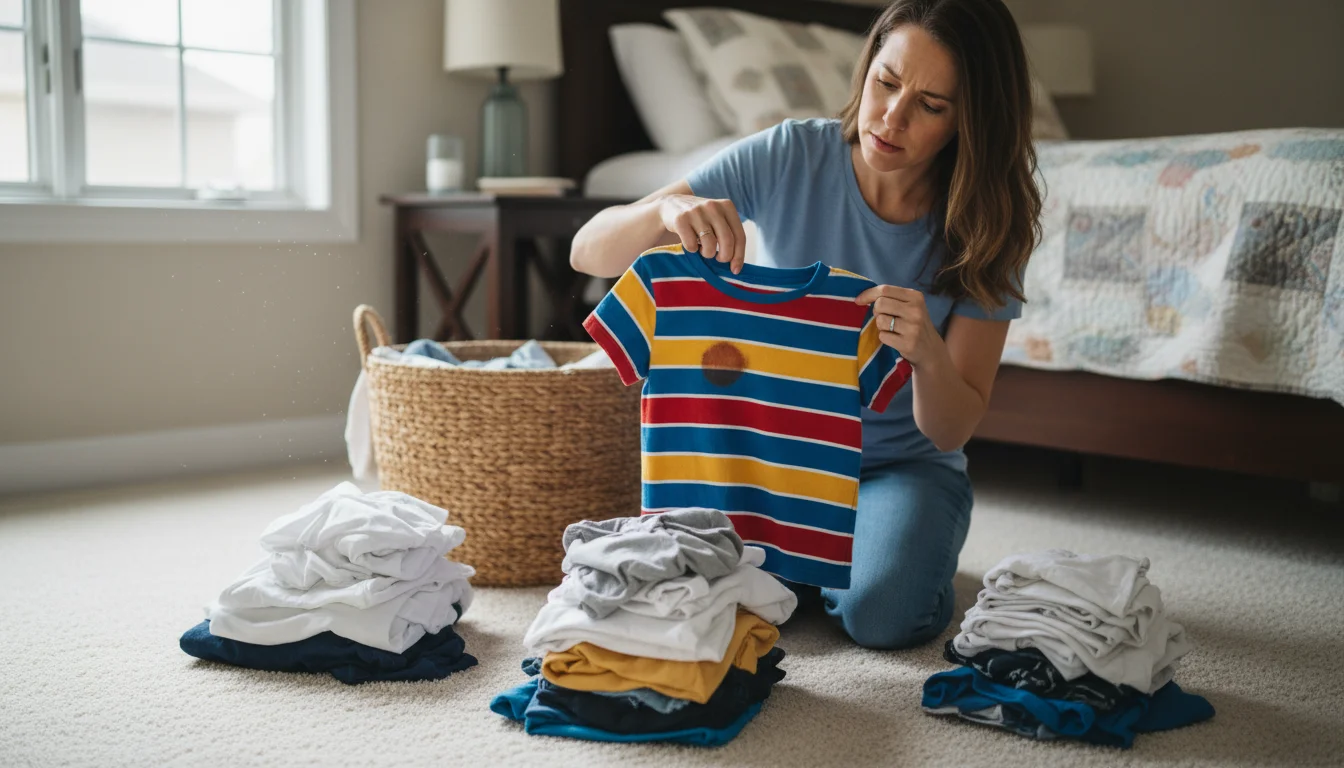
Step 3: Purge and Decide
This is the most critical step. Go through each sorted pile and make decisive choices. Ask yourself:
- Does it fit? Crucial for children’s clothing, but also for adults whose sizes may have changed.
- Is it in good condition? Look for holes, stains, significant wear and tear.
- Have I (or my child) worn it in the last year? For seasonal items, extend this to the last two seasons.
- Does it serve a purpose or bring joy? If the answer is no, it likely needs to go.
- Do I have duplicates? You probably do not need five identical white t-shirts.
Create three distinct piles:
- Keep: Items that fit, are in good condition, and you regularly use.
- Donate/Sell: Items in good condition but no longer needed or wanted.
- Discard: Items too damaged for donation (e.g., stained socks, ripped jeans).
Be firm but realistic. You do not need to become a minimalist overnight. Focus on practical reduction. Studies suggest that a cluttered environment can increase stress levels, making decluttering a positive step for your mental well-being and home harmony.

Step 4: Clean the Empty Closet
With the closet empty, seize this golden opportunity to clean. Wipe down shelves, vacuum or mop the floor, and dust rods and corners. This simple step ensures you build your new organizational system on a clean foundation. It also makes the space feel fresh and inviting, setting a positive tone for its new life.
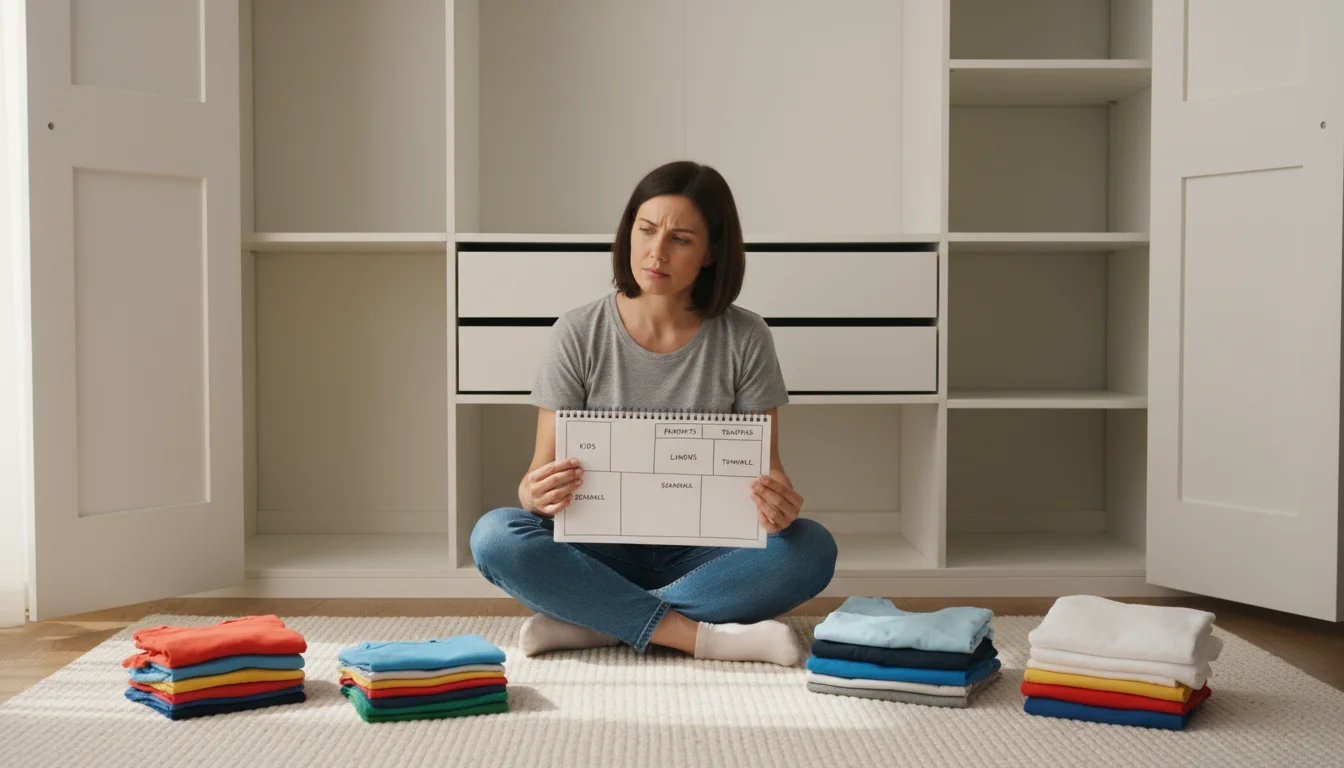
Step 5: Plan Your Layout
Before putting anything back, take a moment to plan. Consider the items you kept and the layout of your closet. Think about:
- Zones: Designate specific areas or “zones” for different family members or categories of items. For example, a “kids’ zone” on lower shelves, a “parent’s hanging zone,” or a “linens zone.”
- Accessibility: Store frequently used items at eye level and within easy reach. Less frequently used items (seasonal, sentimental) can go higher or lower.
- Flow: How does your family interact with the closet daily? Design a system that supports these routines.
This planning stage prevents you from simply “shoving things back in” and ensures your newly organized closet truly serves your family’s needs. You can even sketch out a basic plan if it helps visualize the space.
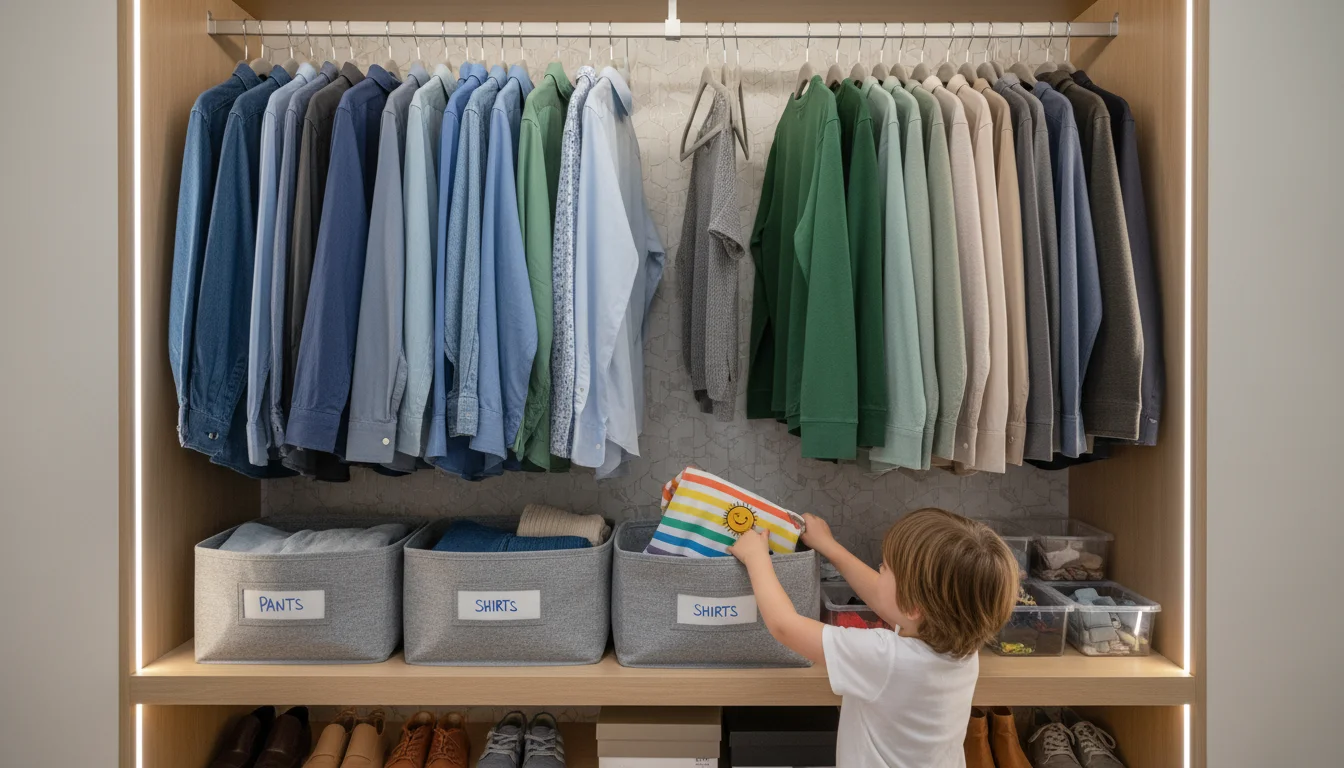
Smart Storage Solutions for Every Family Member
Once you have decluttered, you need smart storage solutions that accommodate everyone. The key lies in selecting products that maximize space and simplify daily routines. This section explores practical product types that deliver real results for different family members.
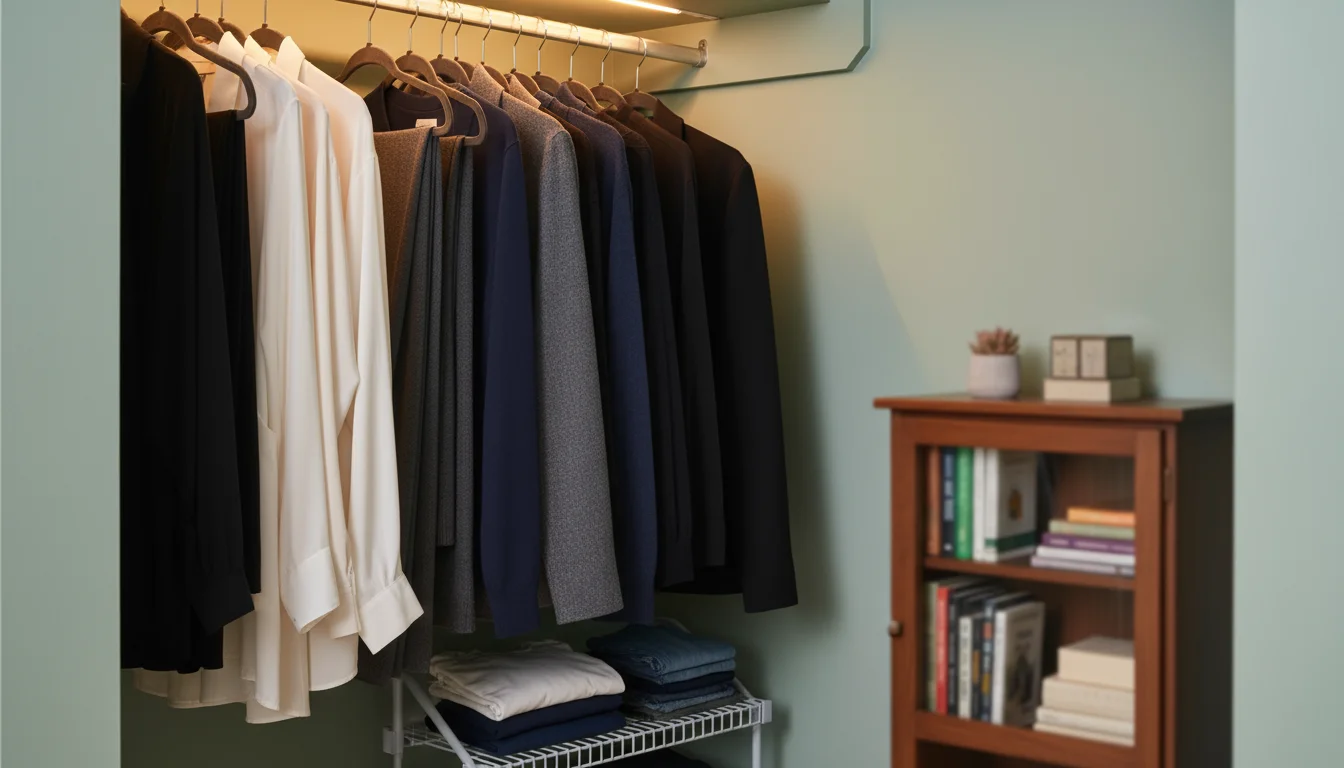
For the Adults: Streamlined and Sophisticated
Your adult wardrobe often requires more dedicated hanging space and specialized storage for accessories. Look for products that offer durability and visual appeal.
- Slimline Hangers: Upgrade to velvet or slim plastic hangers. They save significant rod space compared to bulky plastic or wire hangers. For example, a set of 50 velvet hangers can typically fit in the space of 25 traditional plastic hangers, effectively doubling your hanging capacity.
- Drawer Dividers: For dressers or built-in drawers, fabric or plastic drawer dividers keep intimates, socks, and accessories neatly separated. These prevent items from jumbling together and make finding specific pieces much faster.
- Hanging Organizers: Multi-pocket hanging organizers work wonders for accessories like scarves, belts, or even small clutches. They utilize vertical space efficiently on the back of a door or from an existing closet rod.
- Shoe Organizers: Choose a system that fits your shoe collection. Over-the-door shoe organizers are excellent for smaller collections or frequently worn shoes. Stackable shoe cubbies or shelves work well for larger collections or for keeping pairs together.
- Modular Shelving Systems: Systems featuring adjustable shelves, drawers, and hanging rods allow you to customize your closet to your exact needs. While an initial investment, these systems offer incredible flexibility and efficiency, allowing you to reconfigure them as your needs change. Many home improvement stores and organization retailers offer sturdy, customizable options.
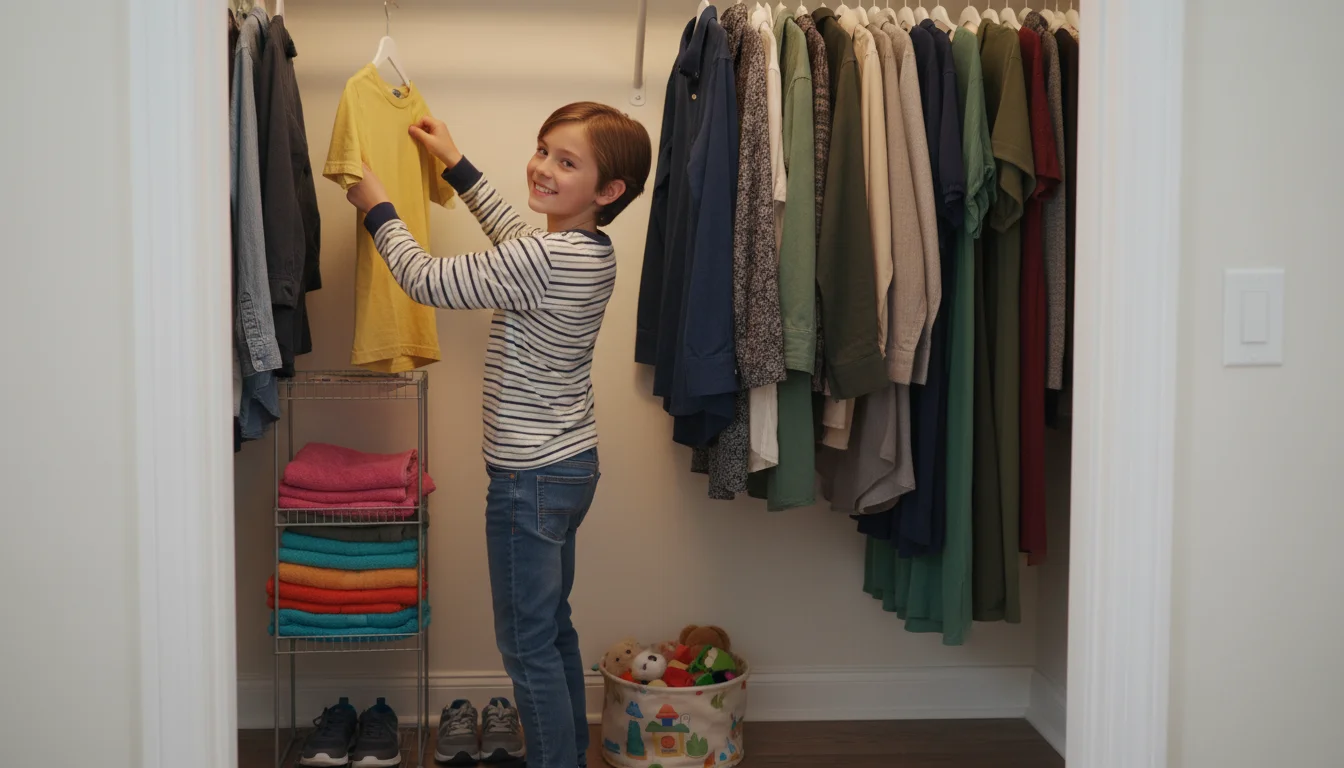
For Shared Spaces: Defining Boundaries
When a closet serves two children or acts as a general family storage area, clear boundaries prevent arguments and maintain order.
- Labeled Bins and Baskets: Use clear, lidded bins for items like seasonal clothes, sports gear, or craft supplies. Label them clearly with contents and the family member’s name if applicable. This makes it easy to see what is inside and ensures items return to their proper home.
- Dual Rod Systems: If you have a single, high hanging rod, consider installing a second, lower rod. This instantly doubles your hanging capacity, which is particularly useful for children’s clothes or for separating adult and child garments. Many kits allow for easy DIY installation.
- Stackable Drawers: Plastic or fabric stackable drawer units provide flexible, contained storage. You can assign each child a set of drawers or use them for different categories of shared items. They are easy to pull out, encouraging children to put away their own clothes.
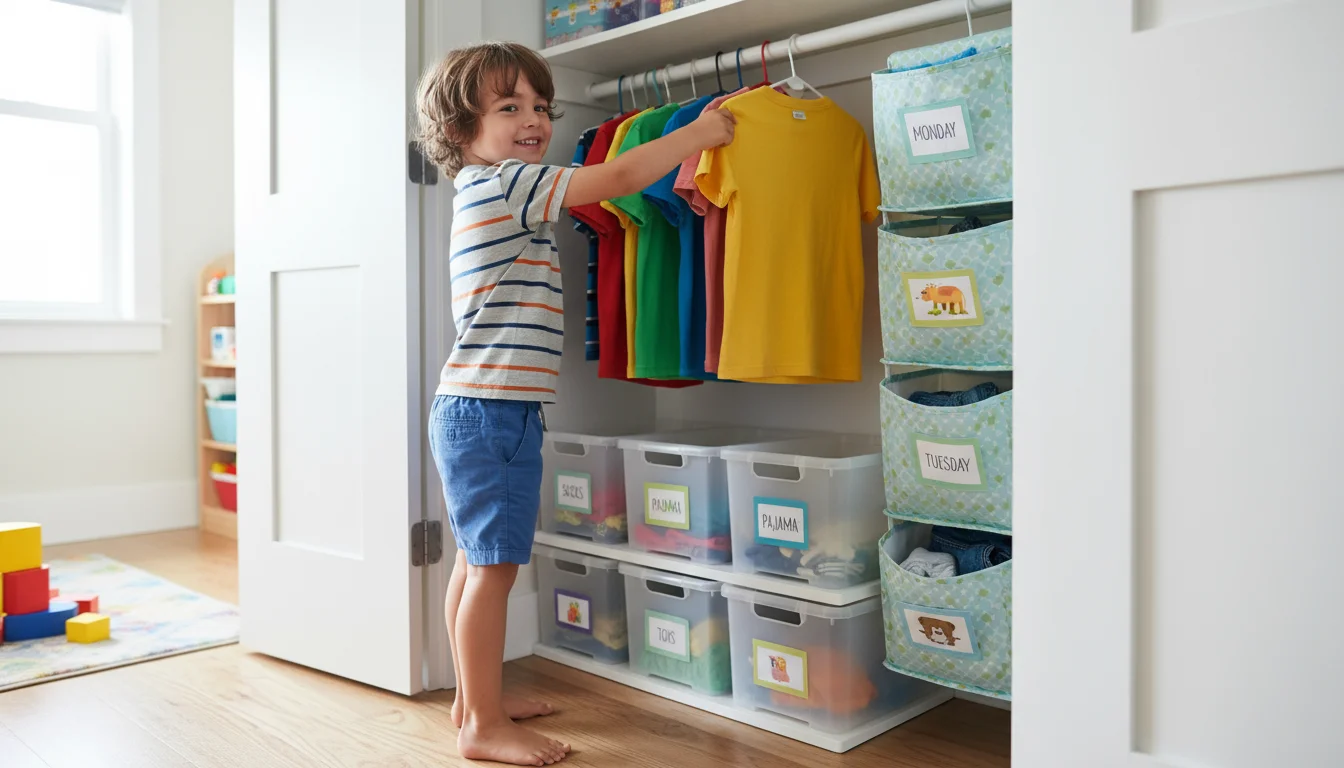
For the Children: Encouraging Independence
The goal for children’s closets is accessibility and simplicity. Empowering children to dress themselves and put away their clothes requires systems they can easily manage.
- Low Hanging Rods: Install a rod at a height your child can reach comfortably. This allows them to choose their outfits and put clothes away independently, fostering valuable life skills.
- Drawer Dividers for Small Items: Keep socks, underwear, and small accessories neatly organized within drawers. This prevents items from getting lost and simplifies morning routines.
- Outfit Organizers: Consider hanging closet organizers with multiple slots. You can pre-plan outfits for the week (Monday, Tuesday, etc.) or separate clothes by type, making morning dressing a breeze.
- Clear Bins for Toys and Accessories: If the closet also stores toys, clear bins allow children to see their contents, making cleanup and playtime more efficient.
When selecting products, prioritize durability and ease of cleaning. Children’s items, particularly storage bins for toys or seasonal clothing, should withstand frequent handling. For additional insights on optimizing storage, The Container Store offers a range of organization tips and product ideas on their website.
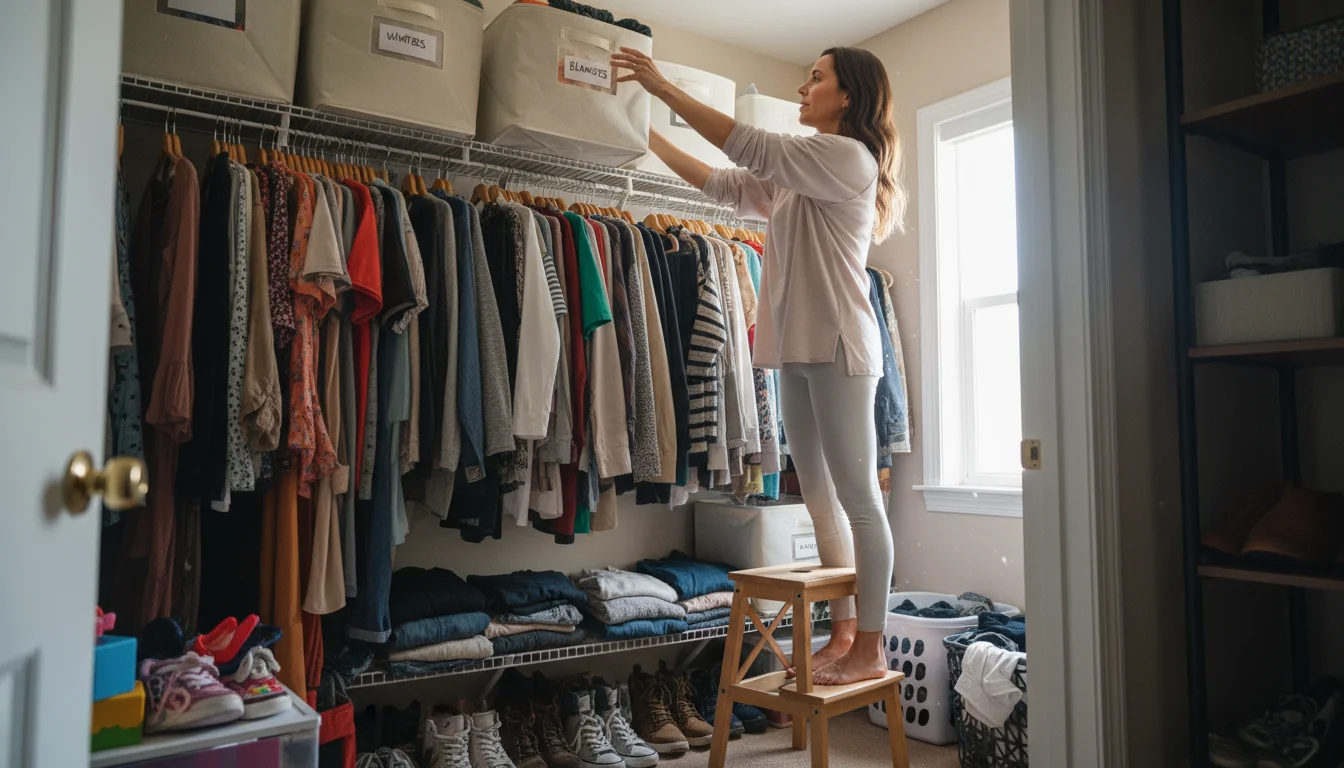
Maximizing Vertical Space: Go Up, Not Out
Many closets suffer from underutilized vertical space. You often have significant empty air above your hanging clothes or between shelves. Harnessing this untapped potential provides substantial additional storage without expanding your closet footprint. Think of your closet as a high-rise building; you want to build up, not just spread out.
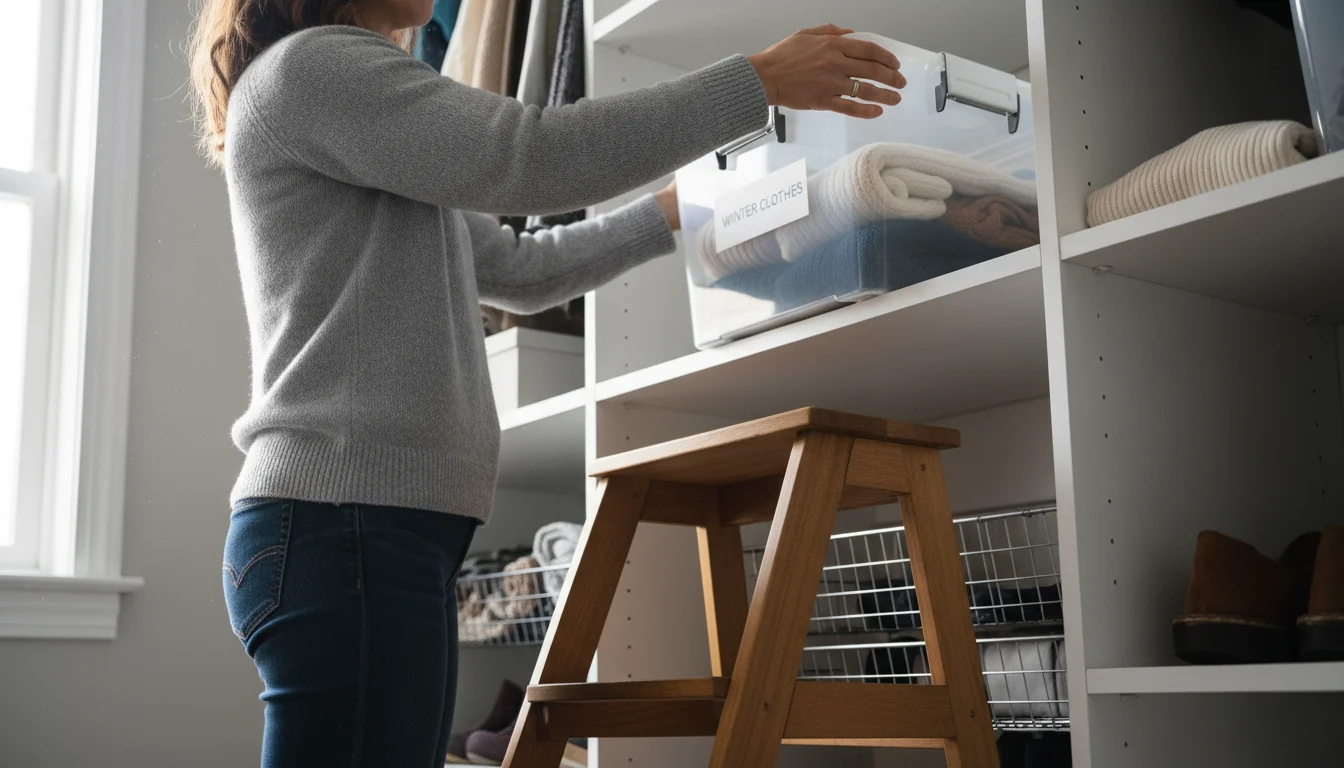
Utilize the Top Shelf
The space above your main hanging rod or top shelf often becomes a dumping ground for random items. Instead, make it work for you:
- Clear Storage Bins with Lids: Perfect for seasonal clothing, rarely used bedding, sentimental items, or extra toiletries. Use clear bins so you can easily see contents, and label them clearly. This prevents you from digging through multiple bins to find one item.
- Luggage Storage: If you have space, store suitcases or travel bags up high. You can even store out-of-season clothing inside empty luggage to maximize efficiency.
- Hat Boxes: Keep hats, fascinators, or other delicate accessories dust-free and organized in decorative hat boxes.
Always use a sturdy step stool for safe access to these higher shelves. Storing heavier items on lower, more accessible shelves prevents potential accidents.
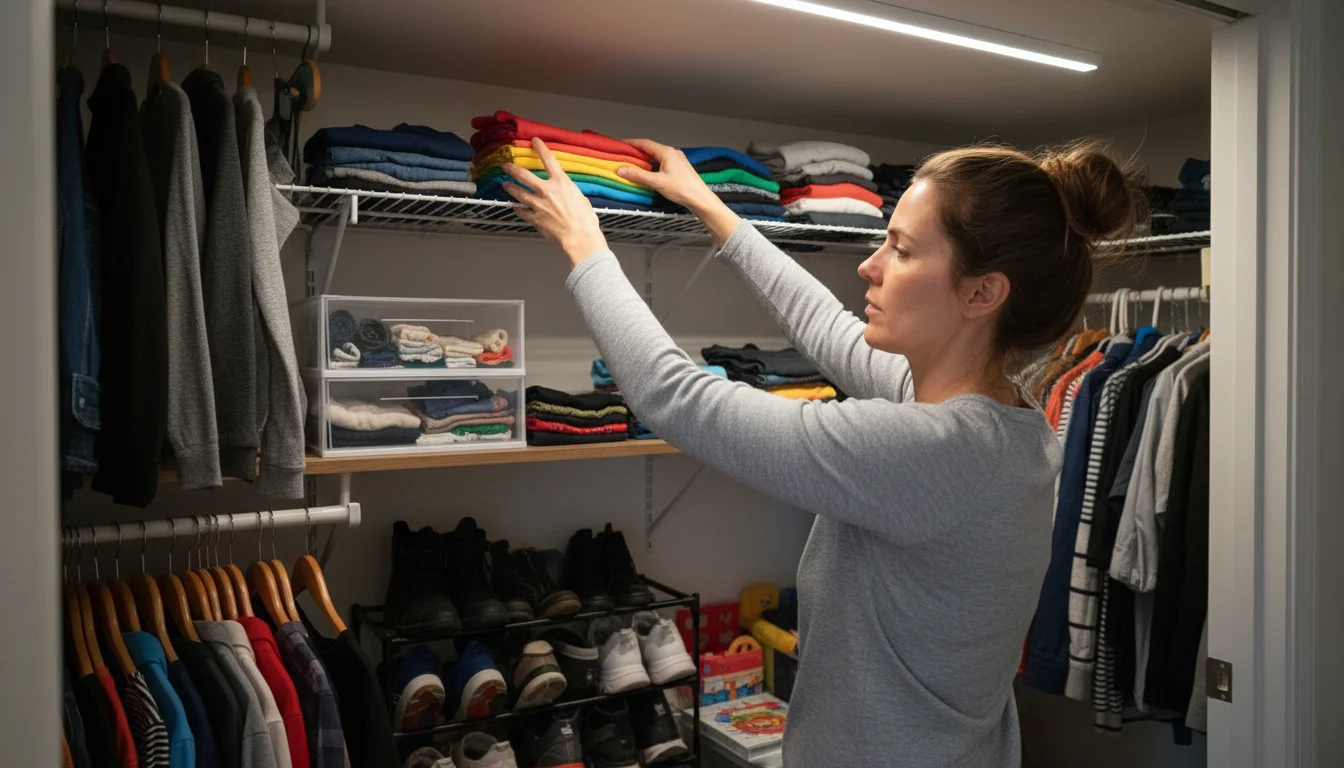
Add Extra Shelving
Many closets come with minimal shelving. You can easily add more:
- Wire Shelving: An affordable and easy-to-install option. Wire shelves come in various lengths and depths, allowing you to customize your space. They are particularly good for folded items, shoes, or stacks of sweaters.
- Adjustable Shelf Systems: These allow you to change the height of shelves as your needs evolve. This flexibility is invaluable for families, accommodating everything from toddlers’ small garments to teenagers’ bulkier clothing or school supplies.
- Stackable Shelf Inserts: If you have existing deep shelves, stackable shelf inserts create additional levels, effectively doubling your usable surface area for folded items, handbags, or shoes.
Measure your closet carefully before purchasing any shelving to ensure a perfect fit. Consider the weight of items you plan to store on each shelf; some materials support more weight than others.
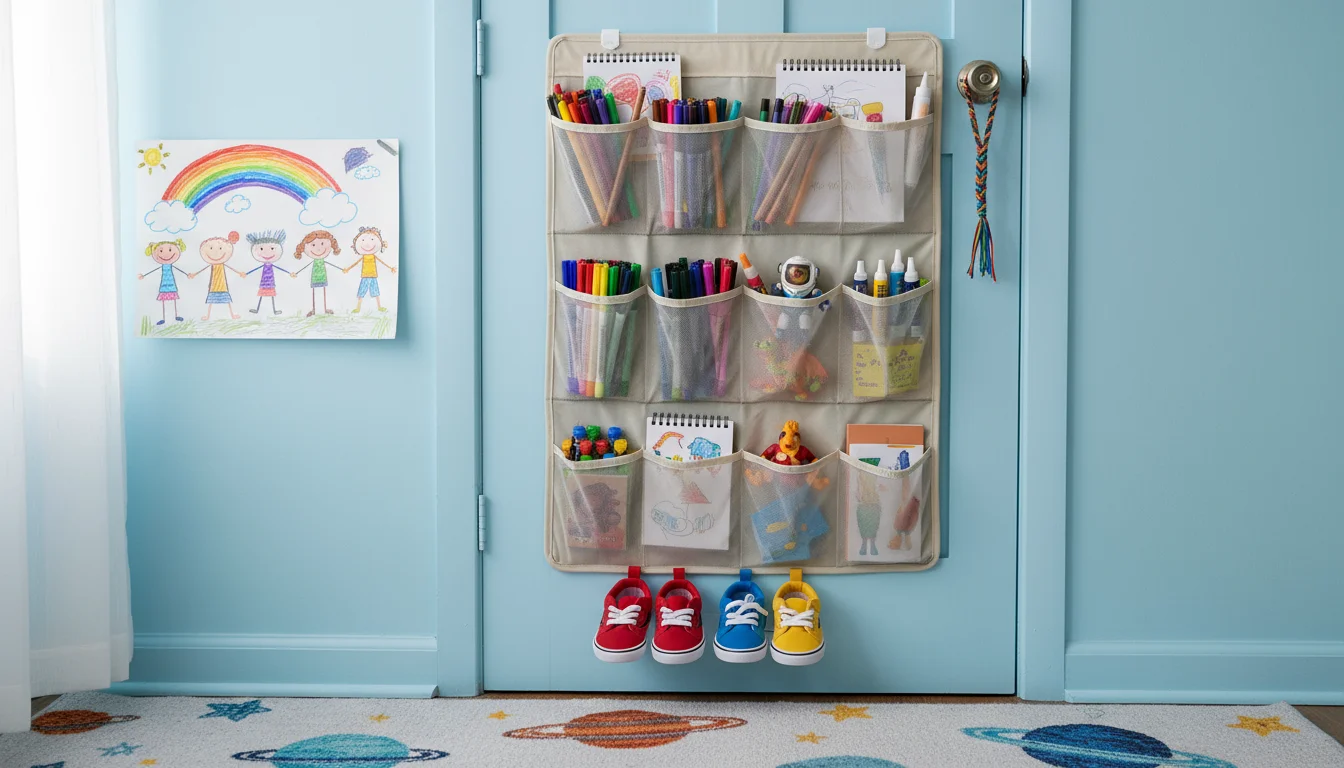
Over-the-Door Organizers
The back of your closet door is prime real estate for vertical storage. This often-overlooked area offers quick access to frequently used items.
- Shoe Pockets: Fabric or plastic pocket organizers hold numerous pairs of shoes, freeing up floor space. They are also useful for storing small toys, art supplies, or toiletries in a child’s closet.
- Multi-Pocket Fabric Organizers: These come with various sized pockets, perfect for accessories like belts, scarves, jewelry, or even small electronics.
- Hooks and Racks: Install hooks for robes, pajamas, or frequently worn jackets. Over-the-door towel racks can even hold multiple pairs of pants or scarves.
Ensure the organizer clears your closet’s interior shelving or contents when the door closes. Check the weight capacity, especially for heavy items like shoes.
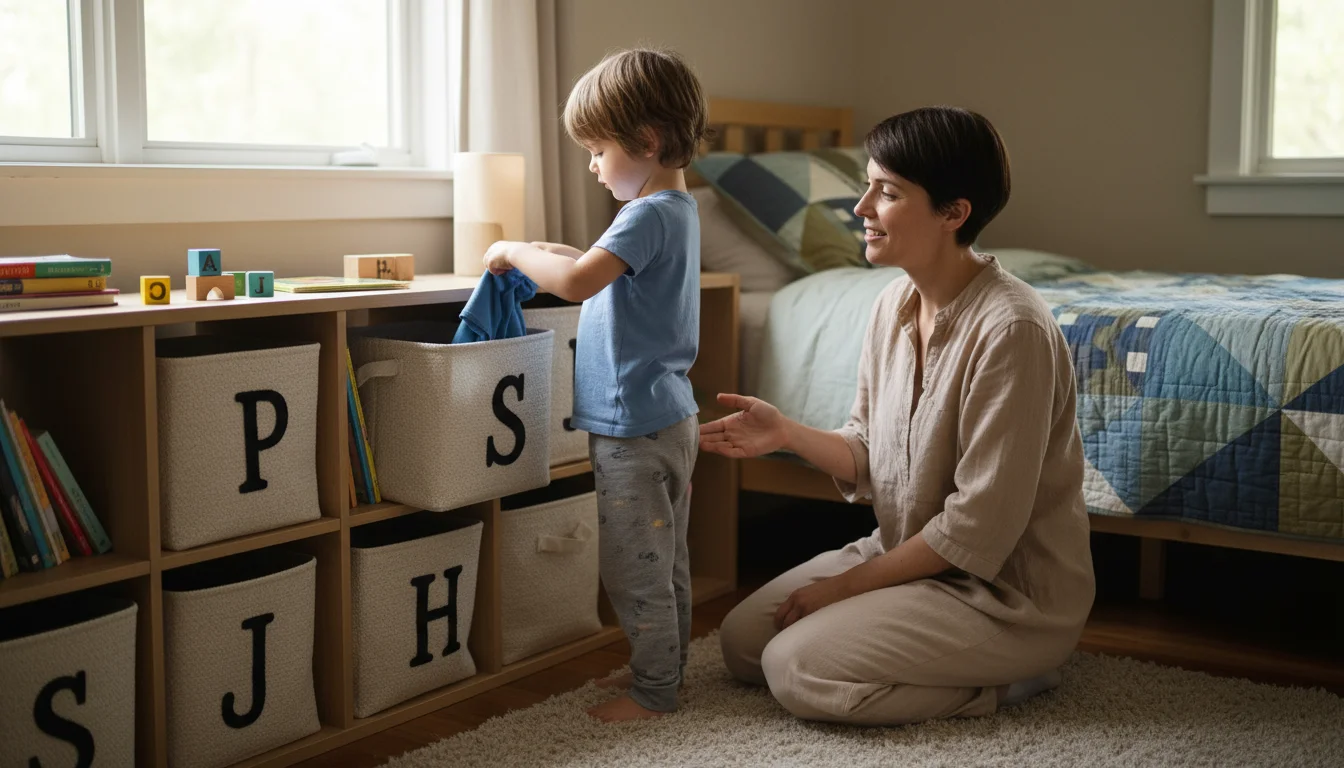
Organizing Kids’ Clothes: Systems That Grow With Them
Organizing kids’ clothes presents a unique challenge: they grow, their interests change, and their wardrobes constantly evolve. You need a system that adapts, promotes independence, and minimizes daily friction. The goal is to make dressing and tidying up easy for both you and your children.
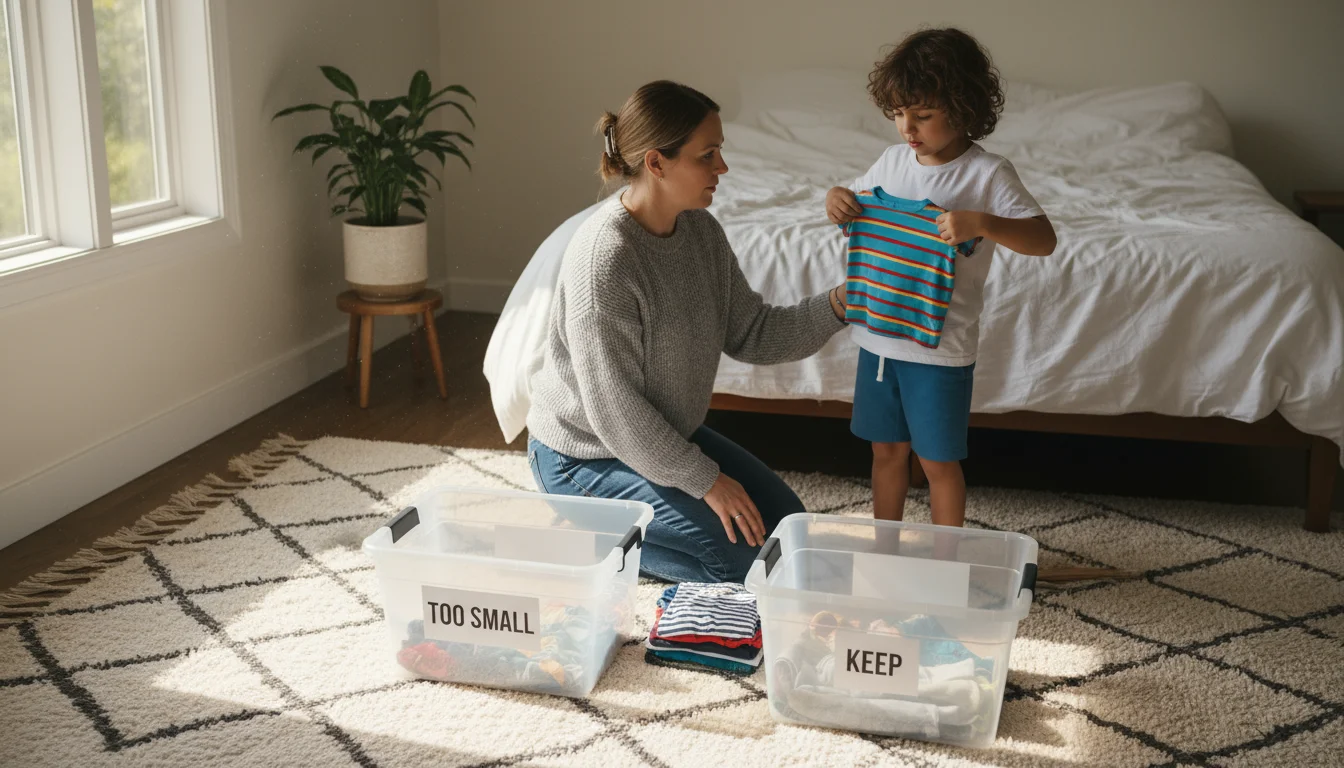
The “Out with the Old, In with the New” Routine
Establish a regular rhythm for reviewing your children’s clothes. You cannot organize effectively if you constantly deal with ill-fitting or outgrown items.
- Seasonal Swap: Twice a year, typically spring/summer and fall/winter, go through their entire wardrobe. Remove anything too small, worn out, or not appropriate for the upcoming season. Store out-of-season clothes in labeled bins (see below).
- The “Too Small” Bin: Keep a designated bin or basket in or near the closet for items that become too small throughout the year. As soon as you notice an item no longer fits, toss it in the bin. When the bin fills up, it is time to sort for donation or storage.
- Involve the Kids (Age-Appropriate): For older children, involve them in the decluttering process. Teach them the “keep, donate, discard” method. This empowers them and helps them understand the value of their belongings.

Creating Accessible Zones
Children need easy access to their clothes. Zones are designated areas for specific items.
- Low-Level Hanging: Install a second, lower closet rod specifically for their hanging clothes. This makes it possible for them to pick out outfits and put away clean clothes themselves. Adjustable rods allow you to change the height as they grow.
- Drawer Organization: Use drawer dividers or small bins within drawers for socks, underwear, and pajamas. This prevents everything from becoming a jumbled mess and makes it easier for them to grab what they need. You might even roll clothes for easier visibility and to save space.
- Outfit Planning Station: For younger children, consider a hanging closet organizer with labeled slots for “Monday,” “Tuesday,” etc. Pre-plan outfits for the week on Sunday evening. This simplifies frantic mornings and gives children a sense of routine.
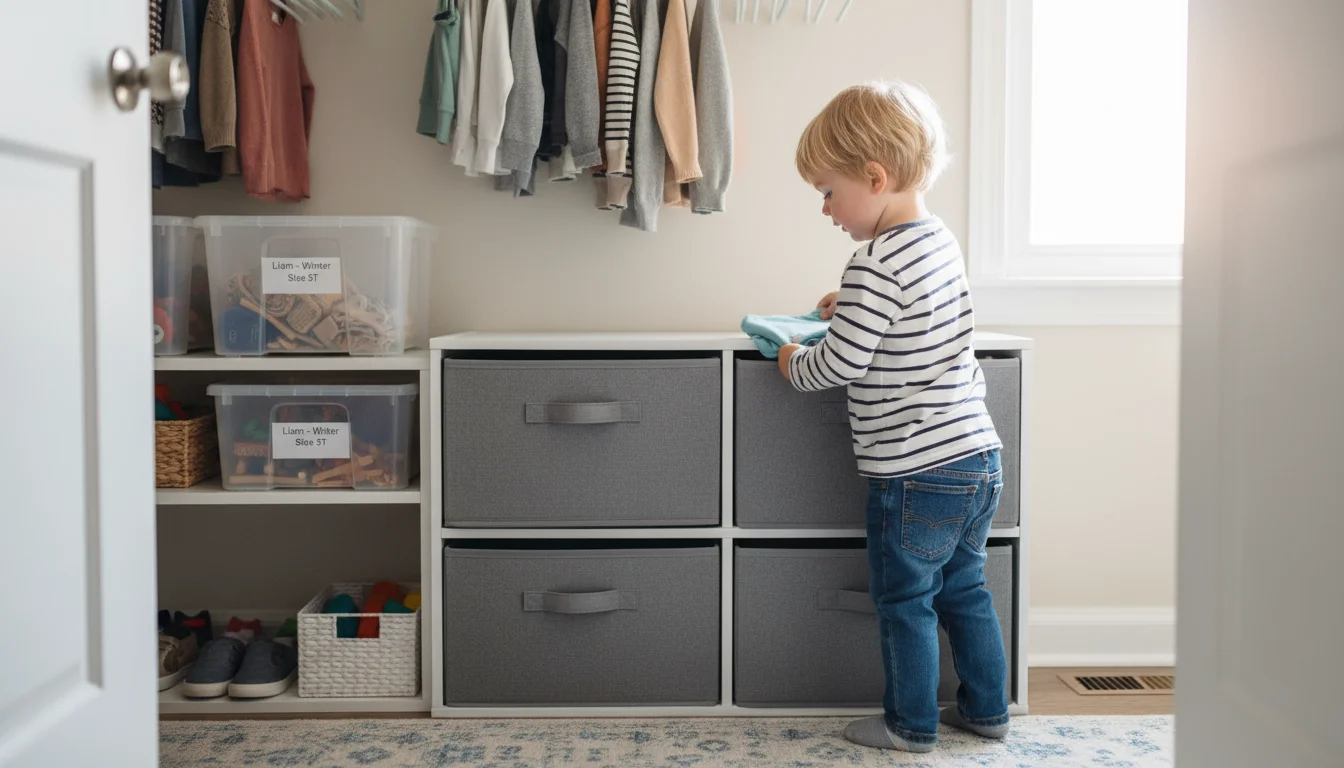
Smart Product Choices for Kids’ Closets
Focus on durable, easy-to-use products that can withstand frequent handling.
- Clear, Labeled Bins: Essential for storing out-of-season clothes, hand-me-downs, or items for future use. Clear bins allow you to see the contents, and labels indicating size, season, and child’s name (e.g., “Liam – Winter – Size 5T”) save immense time.
- Modular Drawer Units: Fabric or plastic drawer towers are excellent for folded clothes or even small toys. They are lightweight, often stackable, and can easily be moved or reconfigured as needed. These are particularly good for closets without built-in drawers.
- Kid-Friendly Hangers: Use hangers sized for children’s clothes to prevent stretching. Slim, non-slip hangers maximize rod space.
- Pegboards or Wall Hooks: Install a pegboard on an empty wall inside the closet or hooks on the back of the door for backpacks, hats, or frequently worn jackets. This keeps items off the floor and easily accessible.
By implementing these systems, you not only organize their clothes but also teach your children valuable organizational skills and foster their independence. This approach transforms the dreaded “getting dressed” ritual into a smoother, more enjoyable part of your family’s day. For more innovative ideas on creating functional spaces for kids, explore resources on Apartment Therapy or IKEA Home Organization.

Budget-Friendly Closet Organization: Smart Solutions for Less
You do not need to spend a fortune to achieve a well-organized closet. Many effective solutions are either free, require minimal investment, or involve smart shopping. Focusing on budget-friendly options ensures that your organization project is sustainable and accessible for every family.

DIY Hacks and Repurposing
Look around your home before heading to the store. You likely possess items you can repurpose for organization.
- Shoe Boxes and Cereal Boxes: Cover old shoe boxes or cereal boxes with decorative paper or fabric to create custom drawer dividers or small shelf bins. They are perfect for socks, underwear, ties, or small accessories.
- Plastic Baskets and Bins from Dollar Stores: These stores offer an array of basic plastic baskets and bins at very low prices. Use them for grouping items on shelves, containing cleaning supplies, or organizing small toys in a child’s closet.
- Old Jeans for Wall Pockets: Cut the pockets from old jeans and sew or glue them onto a piece of fabric or a sturdy board. Hang this on the back of a door for unique wall storage.
- PVC Pipes for Scarves/Belts: Cut short sections of PVC pipe and glue them together or place them in a drawer to create individual compartments for rolled scarves, belts, or even small t-shirts.
The internet offers countless DIY closet organization tutorials, providing inspiration for creative and cost-effective solutions. You only need a little creativity to make existing items work for your closet.
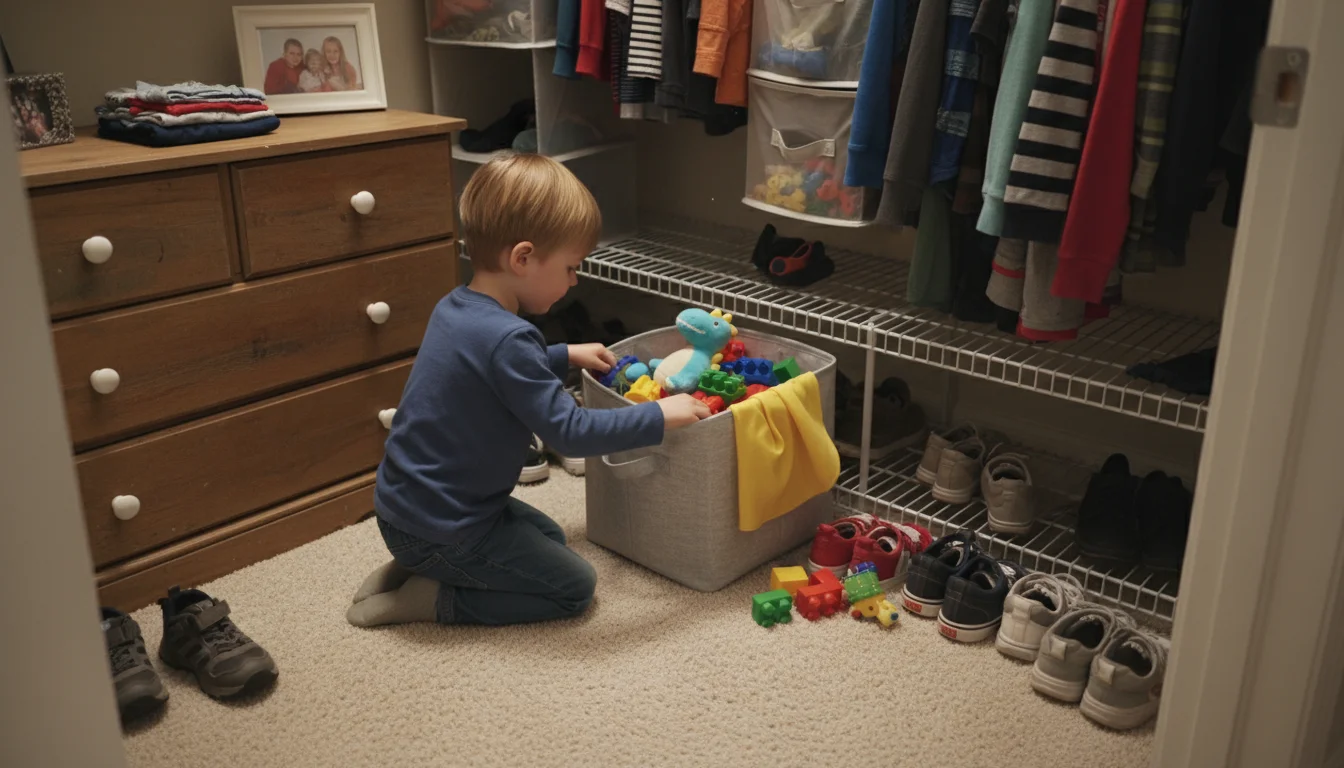
Affordable Product Solutions
When you do need to purchase items, opt for versatile and inexpensive options.
- Basic Wire Shelving Units: Inexpensive wire shelving systems offer significant storage for folded items or bins. They are easy to assemble and can expand your storage capacity without a hefty price tag.
- Fabric Storage Cubes: Often sold in multi-packs at discount stores, fabric cubes fit perfectly into cube organizers or onto shelves. They are great for holding out-of-season clothes, linens, or toys. Look for options with handles for easy retrieval.
- Plastic Drawer Units: Simple plastic drawer towers provide easy-to-see storage and are excellent for children’s clothes or craft supplies. They come in various sizes and are often stackable.
- Heavy-Duty Command Hooks: Use these for hanging belts, scarves, small bags, or even lightweight robes on closet walls or the back of doors without damaging surfaces.
- Multi-Pack Slim Hangers: While individual slim hangers can be pricey, many retailers offer large multi-packs at a reduced per-hanger cost. This is a worthwhile investment for maximizing hanging space.
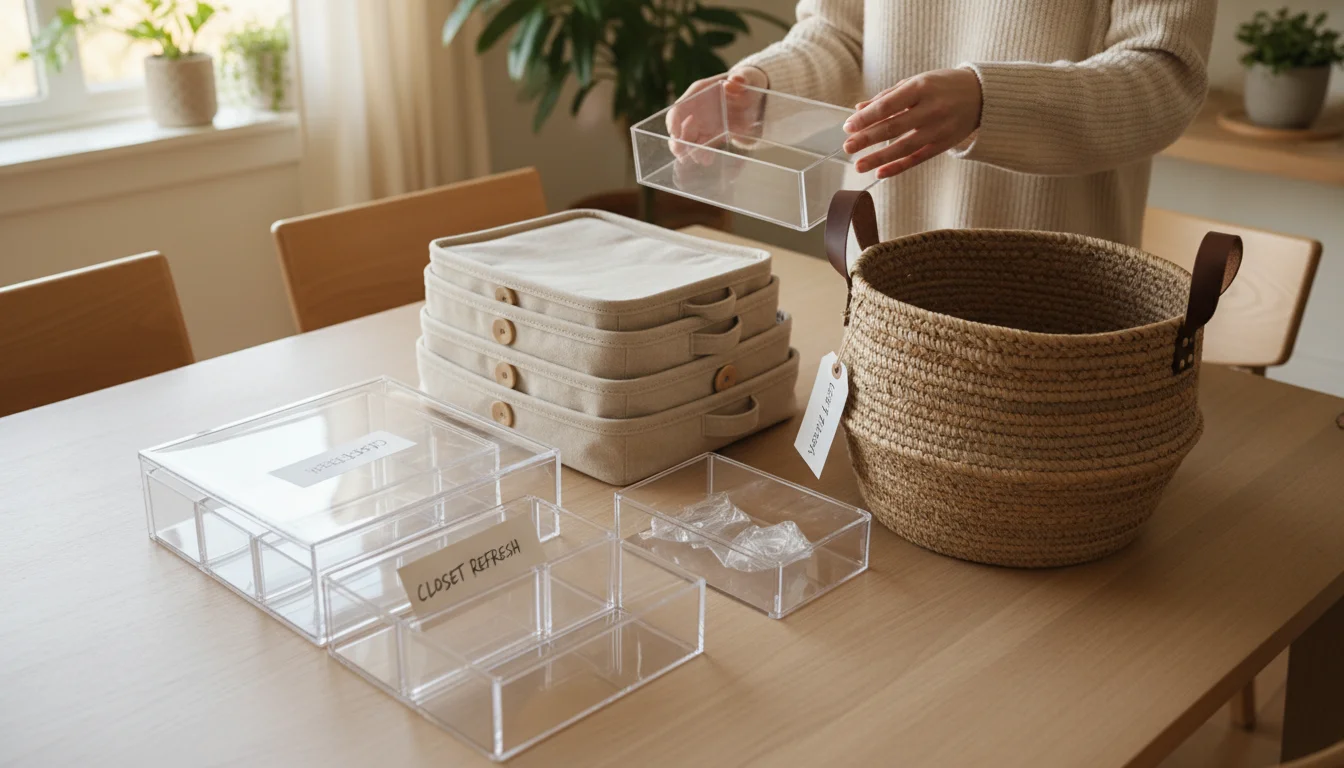
Shop Smart: Sales and Secondhand Finds
Patience and strategic shopping also save you money:
- Wait for Sales: Organization products frequently go on sale, especially at the start of new seasons or during back-to-school periods. Sign up for email lists from home goods stores to receive notifications.
- Check Discount Retailers: Stores like TJ Maxx, HomeGoods, Marshalls, or Big Lots often carry name-brand organization products at significantly lower prices.
- Secondhand Stores and Online Marketplaces: Look for gently used shelving units, drawer organizers, or sturdy bins at thrift stores, consignment shops, or online marketplaces. You can often find high-quality items for a fraction of their original cost. Just ensure items are clean and in good repair.
By combining DIY ingenuity with smart purchasing decisions, you can create a highly functional and beautiful family closet without breaking your budget. The key is to be intentional with every purchase and maximize the use of what you already own.
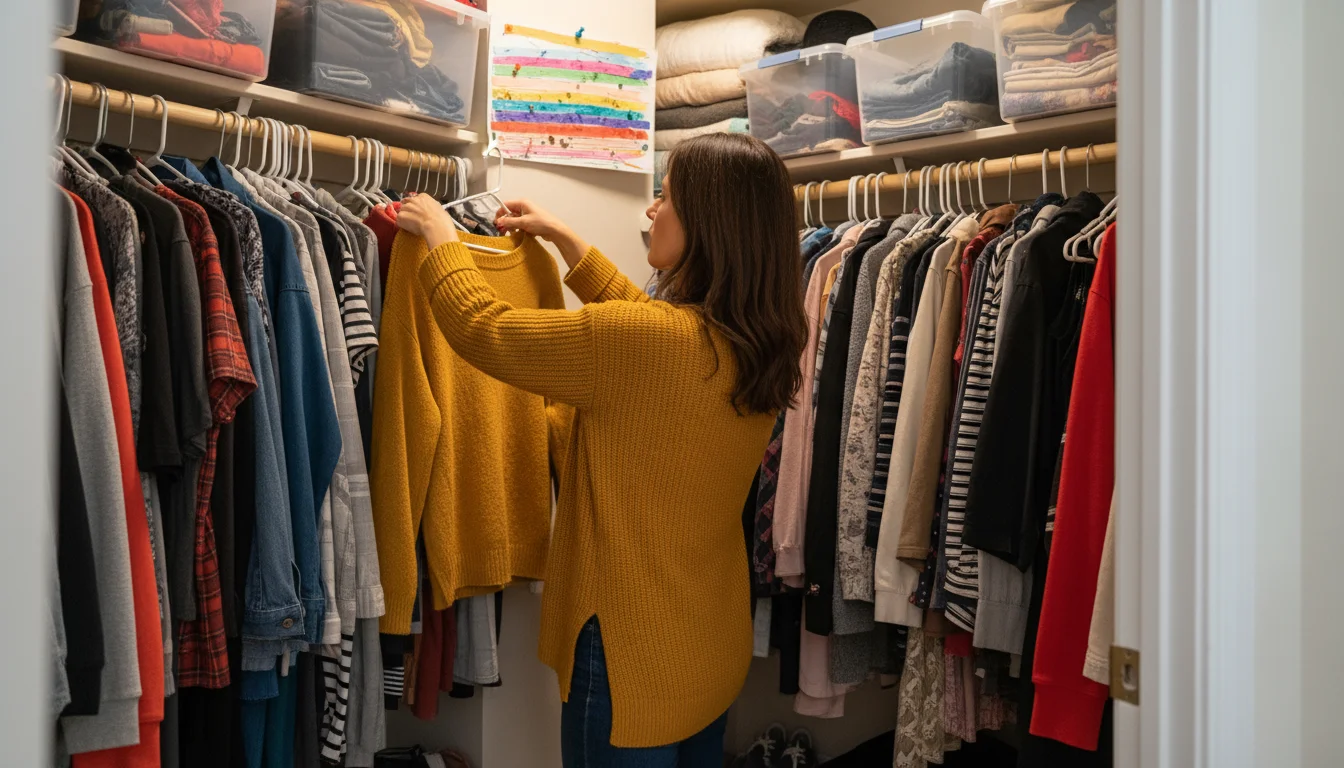
Maintaining Your Organized Closet: A Realistic Approach
You have put in the hard work to declutter and organize, but the real test is maintaining that order over time. Life with a family means constant movement and change, making a perfectly pristine closet an unrealistic expectation. Instead, focus on building consistent, realistic habits that keep your closet functional and prevent it from reverting to chaos.

Implement the “One In, One Out” Rule
This simple rule prevents accumulation. When you bring a new item of clothing into the house, identify an existing item to remove. This applies to everyone, from your child’s new sweater to your own new pair of jeans. It forces you to regularly evaluate your inventory and prevents your closet from overflowing.

The Daily Reset
Spend just 5-10 minutes each day on a quick closet reset. This could involve:
- Putting away clean laundry immediately.
- Hanging up clothes you tried on but did not wear.
- Returning shoes to their designated spot.
- Picking up any items from the floor.
This small, consistent effort prevents minor messes from snowballing into overwhelming tasks. Teach your children to participate in their own daily reset, putting away their pajamas or school clothes.
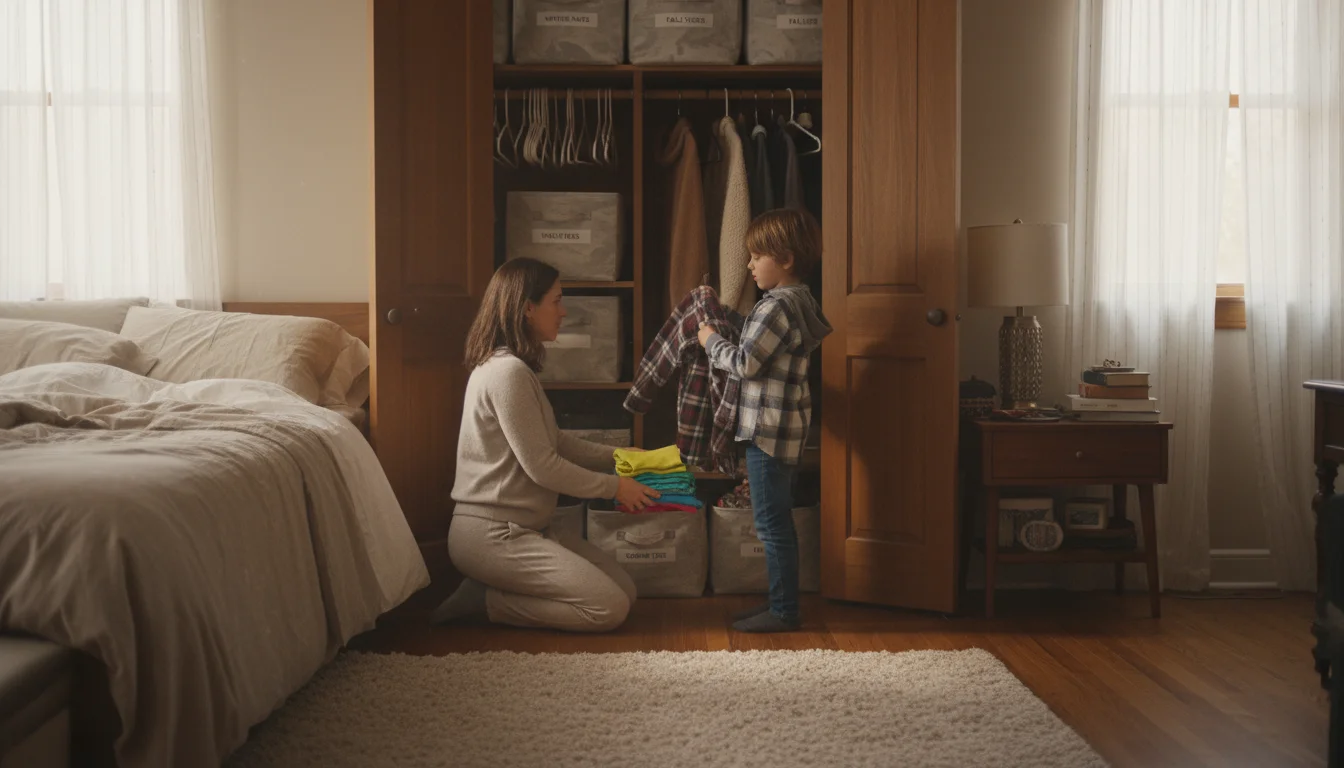
Regular Seasonal Reviews
Beyond the initial declutter, schedule a more thorough review of your closet twice a year, typically at the start of spring and fall. Use this time to:
- Swap Seasonal Clothing: Store away heavy winter coats and sweaters, bringing out lighter spring and summer wear. This keeps your active wardrobe streamlined.
- Assess Fit and Condition: Re-evaluate every family member’s clothing for fit, wear, and tear. Be proactive in removing items that no longer serve a purpose.
- Tweak Your System: Does your current organization still work? Have your family’s needs changed? Adjust bins, shelves, or hanging rods as necessary.
These reviews are less intensive than the initial declutter but are crucial for long-term success. They allow you to adapt your system as your family evolves.
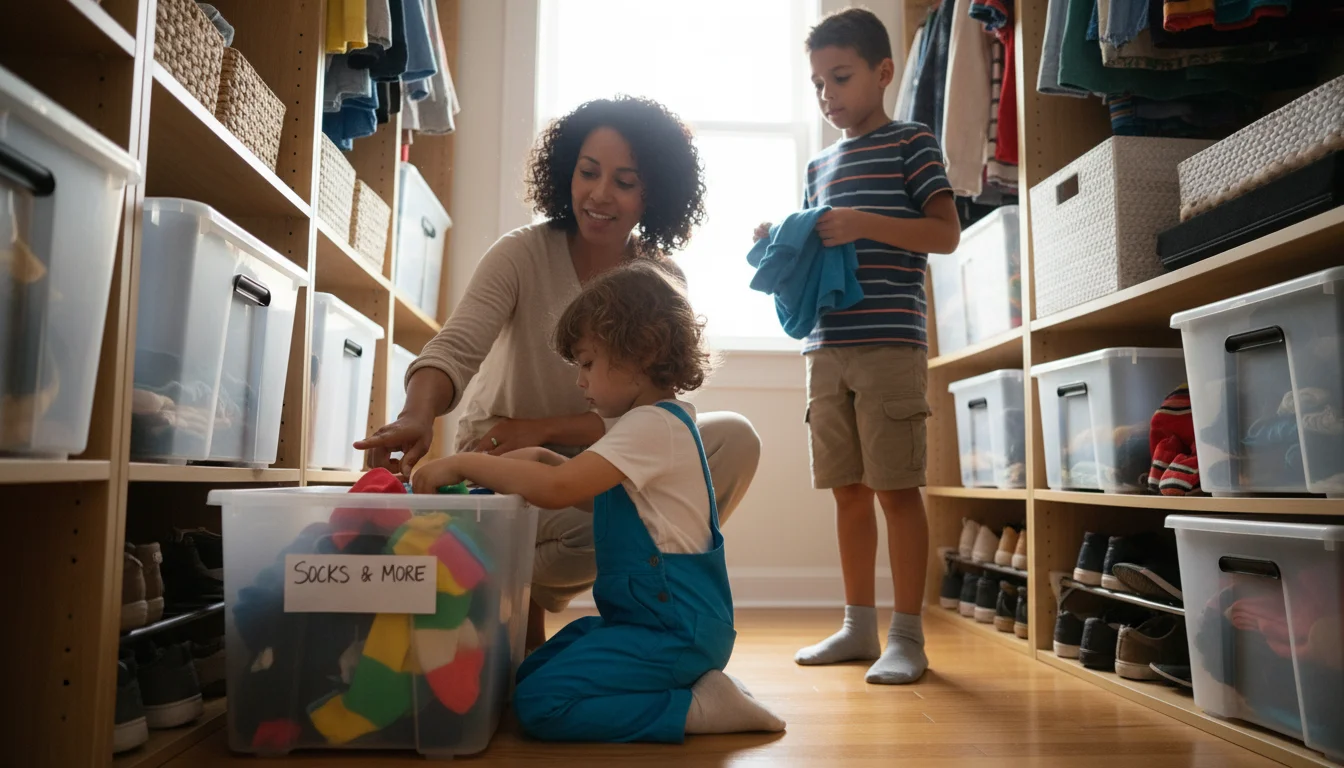
Involve the Whole Family
An organized family closet is a shared responsibility. Involve everyone in its upkeep:
- Clear Expectations: Show everyone where their items belong. Use labels, color-coding, or clear containers to make this intuitive.
- Age-Appropriate Tasks: Younger children can put away socks or pajamas in designated bins. Older children can hang their clothes or sort their laundry.
- Leading by Example: Your consistent habits will encourage your family members to adopt similar routines.
Remember, organization is an ongoing process, not a one-time event. Embrace progress, not perfection. Your family closet will remain functional and comfortable as long as you commit to these realistic, consistent maintenance habits. For further inspiration on practical organization, Real Simple offers many useful articles and tips.
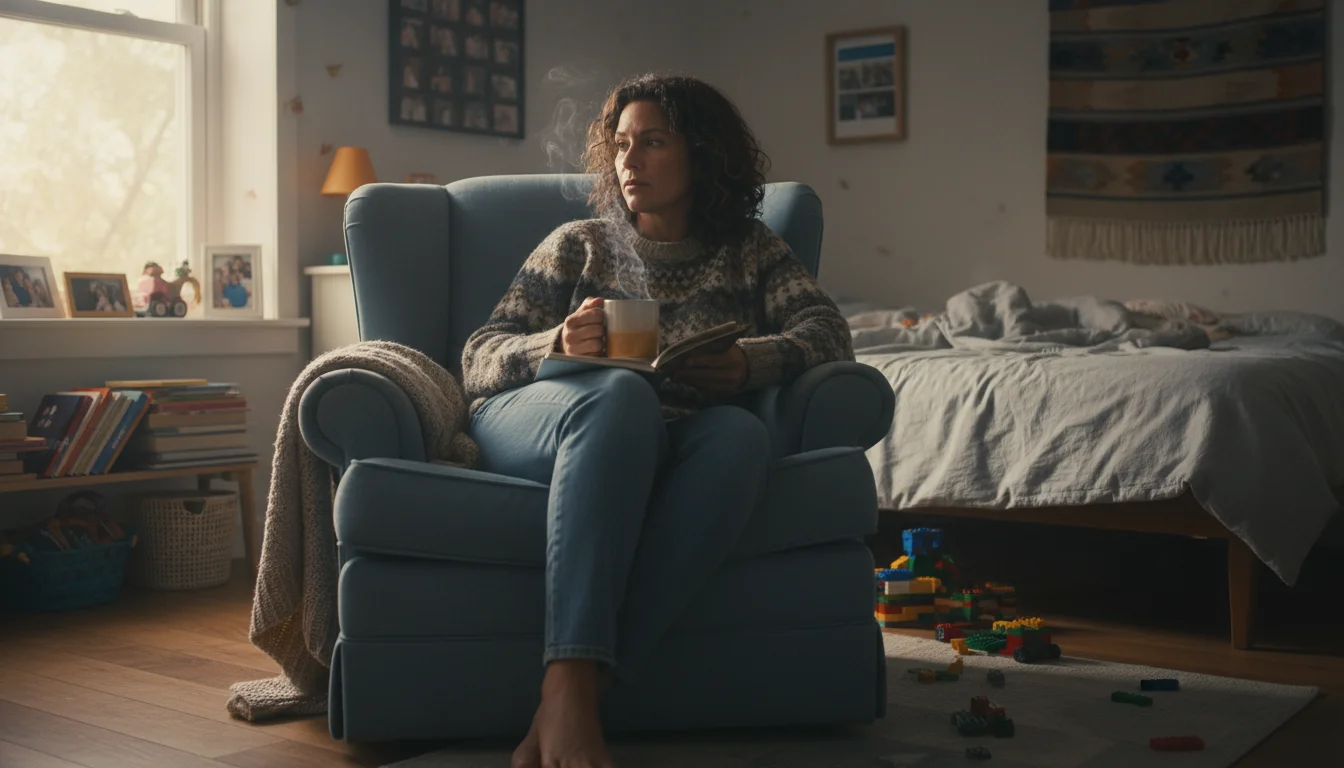
Frequently Asked Questions
What is the best way to organize a small family closet?
Maximize vertical space with additional shelving, stackable bins, and over-the-door organizers. Use slim hangers to save rod space. Implement zones for each family member to keep items separated and accessible. Focus on decluttering ruthlessly to ensure you only keep what you truly need and use, preventing the space from feeling cramped.
How can I make my kids’ closet organization last?
Involve your children in the process from the start. Create easy-to-use systems they can manage independently, such as low hanging rods, clear labeled bins, and simple drawer dividers for socks and underwear. Establish regular “out with the old” routines for outgrown clothes and implement a quick 5-minute daily tidy-up. Consistency and participation from the children are key.
What are some budget-friendly closet organization products?
Look for affordable plastic bins from dollar stores, fabric storage cubes from discount retailers, and basic wire shelving units. You can also repurpose items you already own, such as shoe boxes or old plastic containers. Shopping sales and checking secondhand stores for gently used items also offers significant savings.
Should I store seasonal clothes in the main closet?
Generally, no. Store out-of-season clothes in labeled bins or vacuum-sealed bags on high shelves, under beds, or in a garage or attic. This frees up valuable space in your main closet for current, frequently used items. Rotate clothing bi-annually to keep your active wardrobe functional and uncluttered.
How often should I declutter my family’s closet?
Aim for a thorough declutter and review at least twice a year, usually when swapping out seasonal clothing (e.g., spring/fall). Additionally, maintain a “too small” bin for children’s clothes and practice the “one in, one out” rule year-round to prevent accumulation. Consistent, small efforts make big decluttering tasks less daunting.
For expert home organization guidance, visit
The Container Store — Organization Tips,
IKEA Home Organization,
Martha Stewart — Home,
Houzz — Home and
The Spruce — Home Organization.
Disclaimer: This article is for informational purposes only and is not a substitute for professional advice. Consult professional organizers or specialists for personalized recommendations.
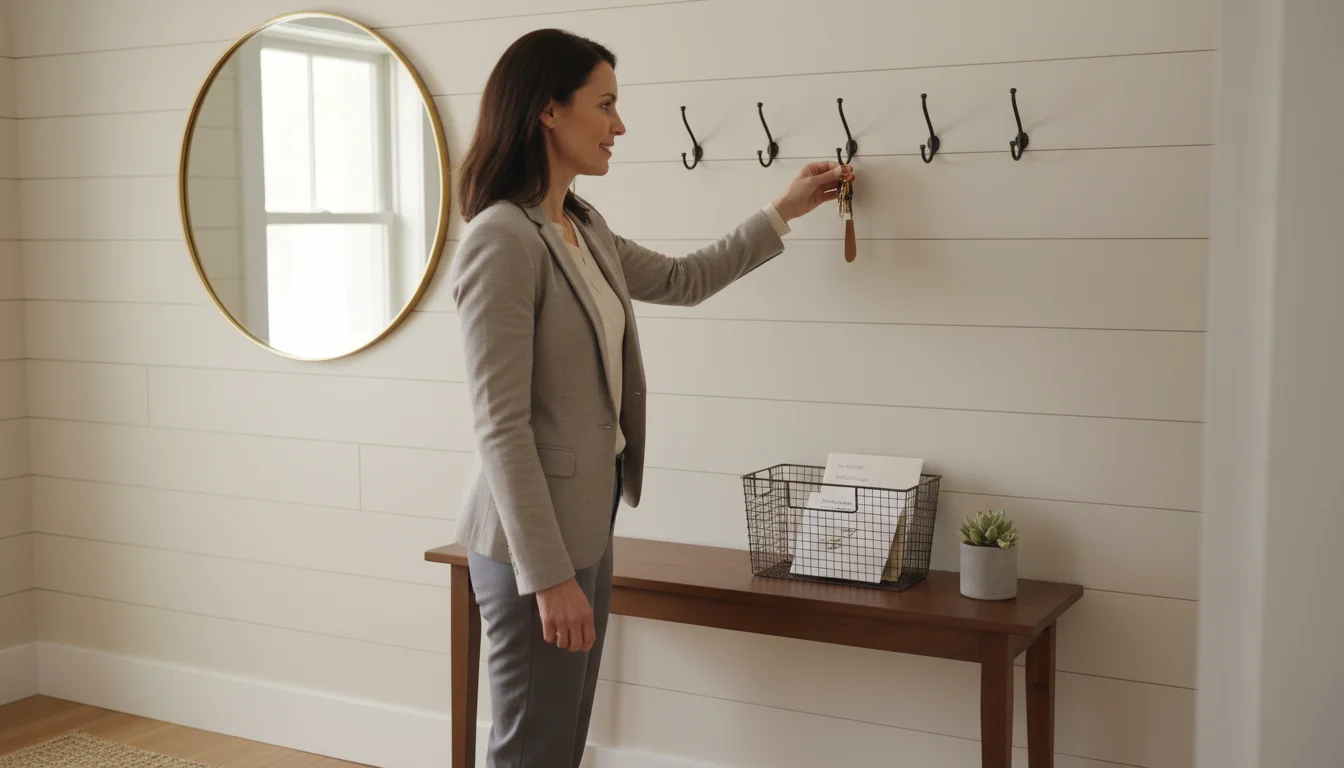
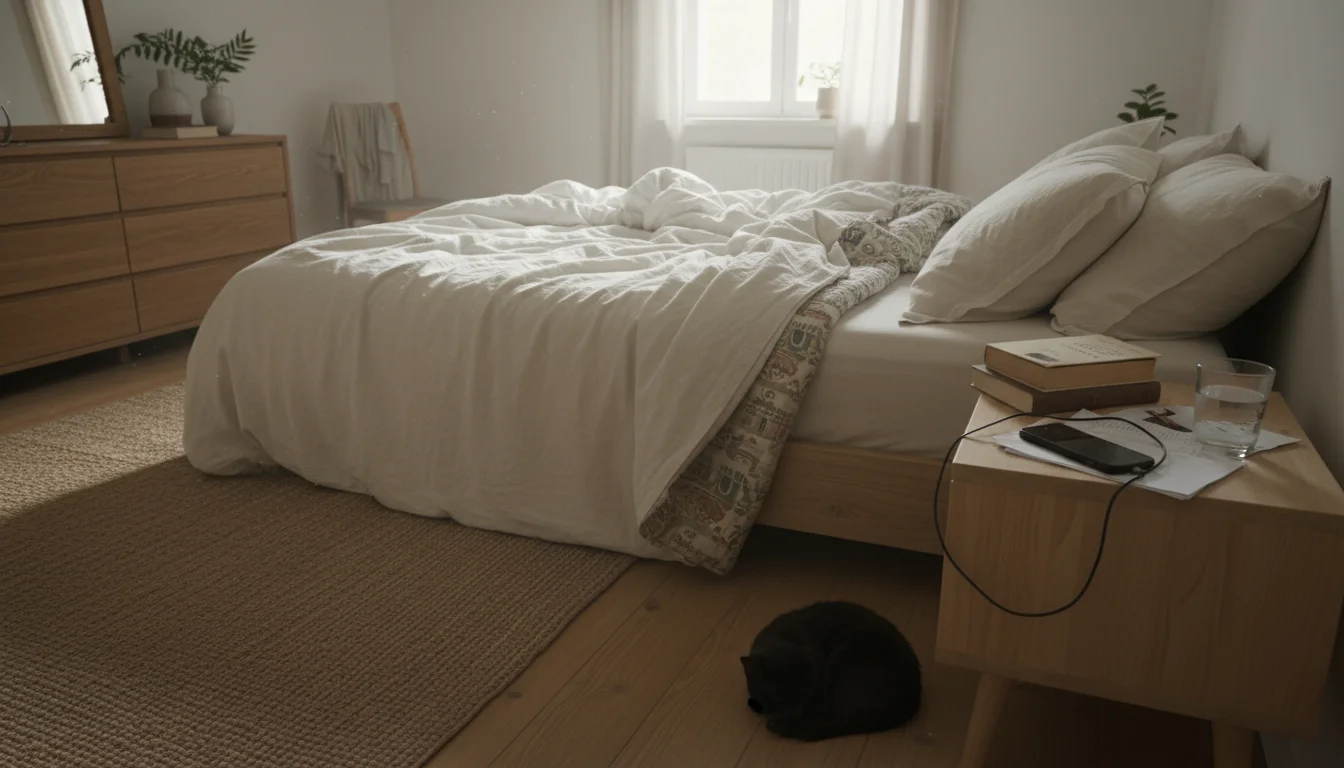
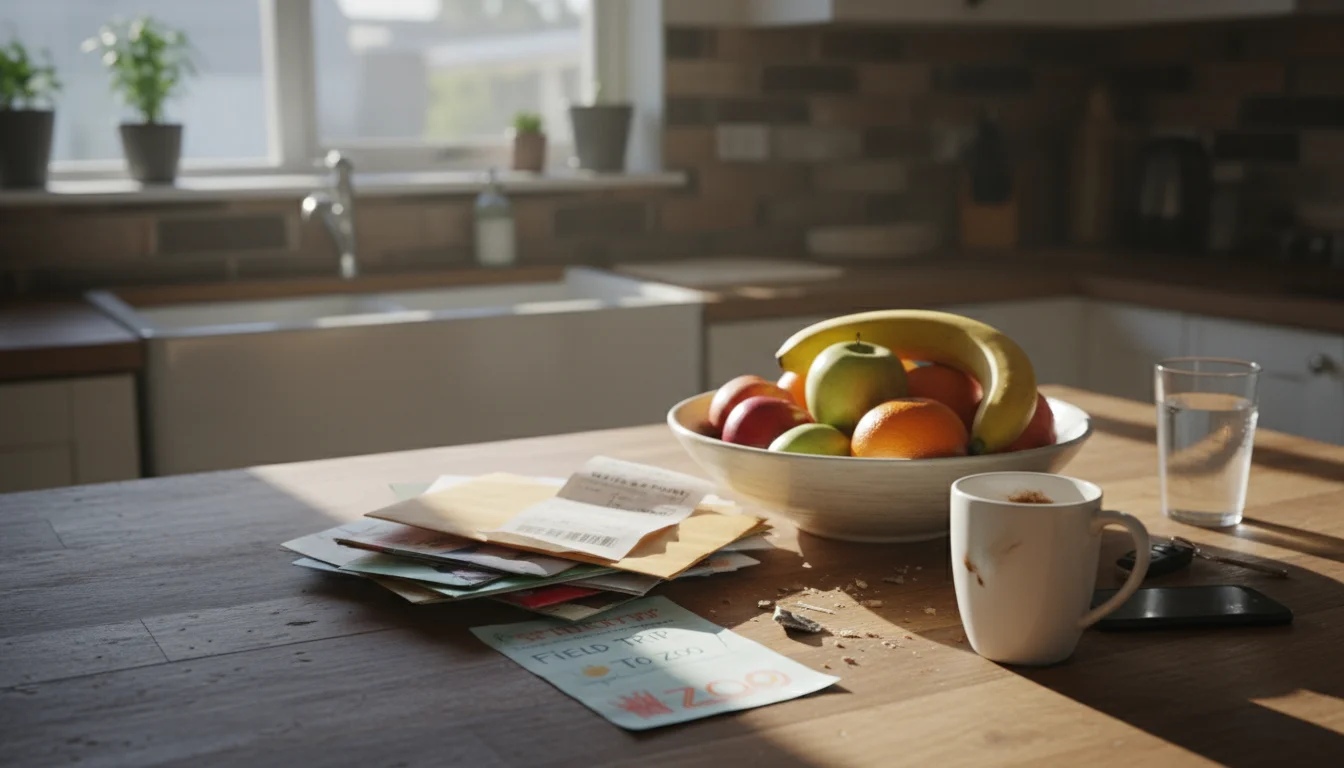

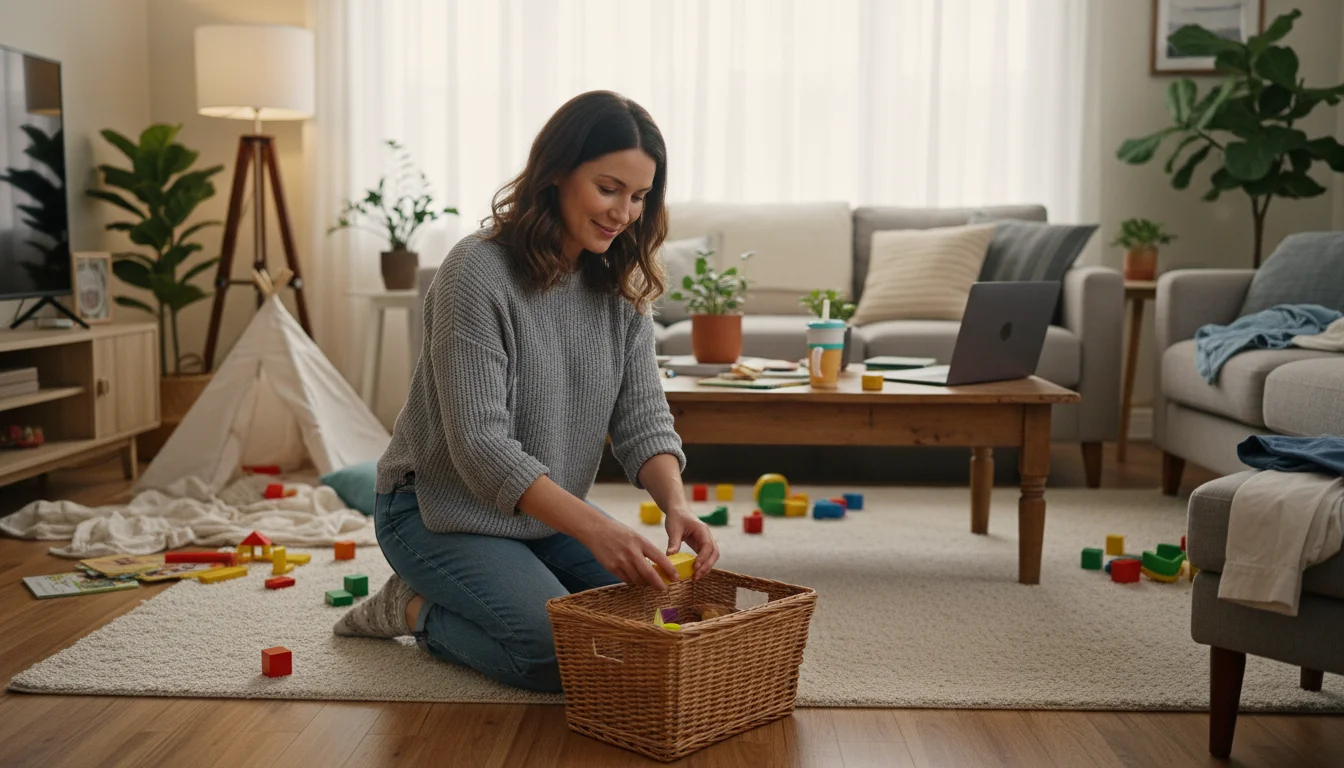

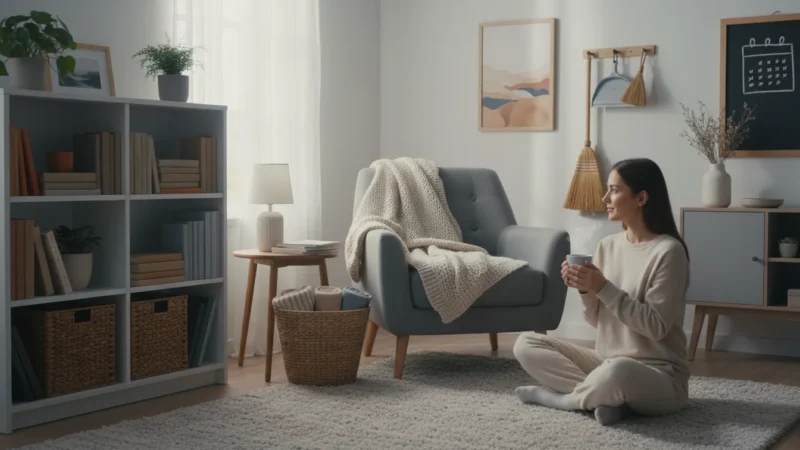

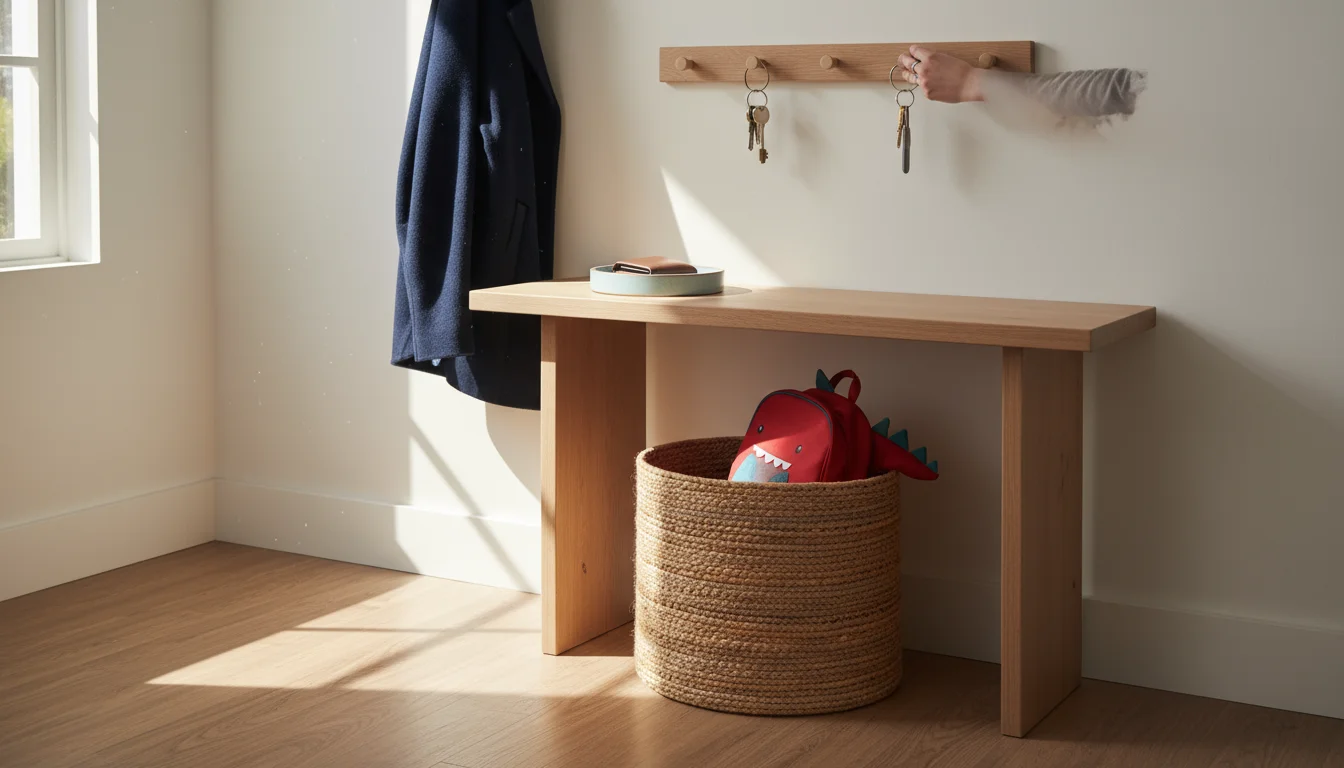
Leave a Reply